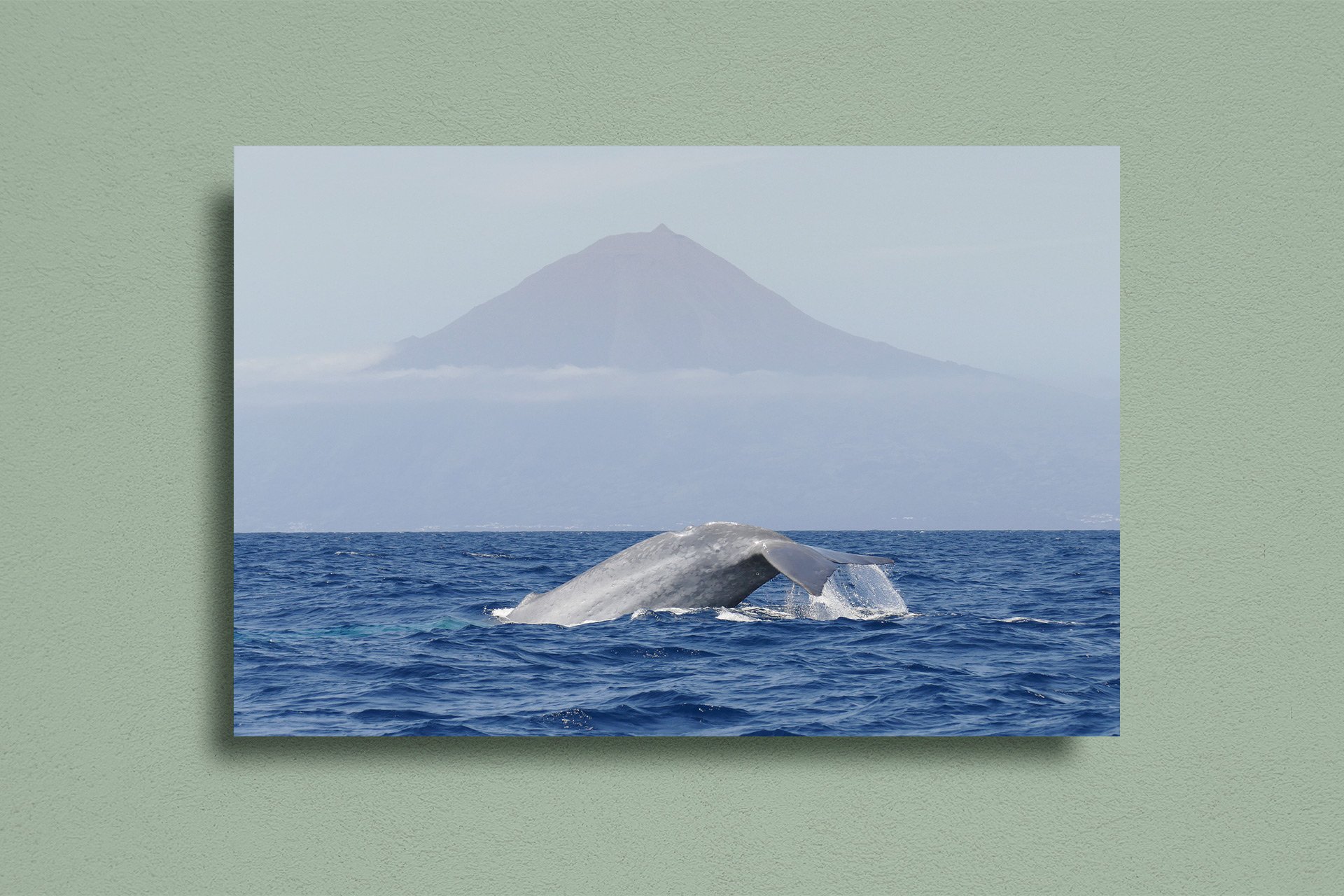Kalifornien
Die schönsten Strände, die wildesten Küsten, die schönsten Parks: Kalifornien hat alles. Auch sehr, sehr gute Whale-Watching-Gebiete.
Foto: Oliver Dirr / Whaletrips
wale: Kalifornien
In Kalifornien hat Whale Watching eine lange Tradition, schon in den 1950er Jahren fuhren die ersten Boote raus. Gesichtet werden vor allem Grauwale auf ihrer jährlichen Wanderung nach Norden. Auch Buckel- und Blauwale sind oft zu beobachten.
Wie überall an der nordamerikanischen Küste liegt auch in Kalifornien der Fokus auf der Wanderung der Grauwale: Jedes Jahr ziehen sie zwischen arktischen Nahrungsgründen und subtropischen Fortpflanzungsgebieten hin und her. Zwischen November und Februar passieren sie Kalifornien auf dem Weg nach Süden, zwischen Februar und Mai (Höhepunkt im April) auf dem Weg nach Norden – gemeinsam mit ihrem Nachwuchs, weshalb sie nordwärts deutlich näher an der Küste schwimmen als südwärts.
An der kalifornischen Küste hat man zudem recht gute Chancen, Blauwalen zu begegnen, am besten zwischen Mai und Dezember (Höhepunkt: Juni bis September). Auch Buckelwale und Orcas werden immer häufiger gesichtet, vor allem in der Gegend um Monterey Bay. Zahlreiche Delfin-Arten können an den meisten Orten das ganze Jahr über beobachtet werden. Auch Land-Beobachtungen sind an vielen Orten möglich.
Zu den wichtigsten Orten im Norden Kaliforniens zählen der McKerricher State Park und der Mendocino Headlands State Park. Whale Watcher sind hier vor allem von Mitte Dezember bis Februar für die Süd-Migration sowie von Februar bis April für die Nord-Migration der Grauwale.
Die zentrale Küste Kaliforniens bietet deutlich mehr Whale-Watching-Angebote, hier gibt es über 20 Anbieter für Boots-Touren und über 20 ausgewiesene Spots für Land-Beobachtungen – die wichtigsten Orte sind: Point Reyes National Seashore, Sonoma Coast State Park, San Simeon und der Montana de Oro State Park.
Ein Blauwal kurz vor dem Abtauchen. Im Schnitt hebt nur einer von sieben beim Abtauchen die Fluke. Manche Blauwale tun es nie. Foto: Oliver Dirr / Whaletrips
Auch von San Francisco und der Bay Area aus kann man zwischen Mitte Dezember und Mai Grauwale beobachten, zwischen Juli und November werden hier auch Blauwal-Safaris zu den Farallon Islands angeboten, die 35 Kilometer vor der Küste liegen und wichtige Nahrungsgründe für Grauwale, Buckelwale und Blauwale sind. Ganztages-Tickets kosten bis zu 125 Dollar, Touren starten in San Francisco, Sausalito und der Halfmoon Bay.
Von Monterey aus starten von Dezember bis April Grauwal-Touren – mit dem Höhepunkt im Februar (Süd-Migration) und April (Nord-Migration). Buckelwale und Blauwale können zwischen Mai und Dezember beobachtet werden, Blauwale allerdings nicht sehr regelmäßig. Das ganze Jahr über werden vor der Küste von Monterey zudem einigermaßen regelmäßig Orcas gesichtet. Viele Delfin-Arten sind das ganze Jahr über zu sehen.
Süd-Kalifornien mit Santa Barbara, Ventura County, Los Angeles, Newport und San Diego ist aus Whale-Watching-Sicht der bedeutendste Teil der Küste, auch für Beobachtungen von Land aus (Cabrillo National Monument, Point Vicente Interpretive Center, Crystal Cove State Park).
Von Newport aus macht Slater Moore phantastische Drohnen-Videos und Fotos. Wie überall in Kalifornien kann man Wale von fast jedem erhöhten Punkt aus sehen, dennoch gibt es in Süd-Kalifornien 25 explizit ausgewiesene Orte, an denen Landbeobachtungen am besten möglich sind.
In Santa Barbara erreicht die Grauwal-Migration zwischen Januar und März ihren Höhepunkt, wenn die Grauwale mit ihrem Nachwuchs nah an der Küste nach Norden wandern. Zwischen Juni und November kann man zudem Buckelwale und Blauwale beobachten, die besten Chancen hat man von Juni bis September.
In den Gewässern von Santa Barbara werden Blauwale recht verlässlich gesichtet, das Gebiet gehört zu den besten Gegenden der Welt für Blauwal-Beobachtungen. Auch zahlreiche Delfin-Arten und gelegentlich Orcas können hier gesichtet werden.
Foto: Shutterstock
TO DO: Kalifornien
In Kalifornien gibt es mit dem Highway Number One eine der schönsten Küstenstraßen der Welt: Über fast 1.000 Kilometer führt sie vorbei an den schönsten Stränden, wildesten Küsten und höchsten Bäumen. Auch hier: die größte Seeelefanten-Kolonie Nordamerikas.
Die California State Route (auch: Highway 1) zwischen San Francisco und Los Angeles gehört mit ihren einsamen Stränden und zerklüfteten Buchten zu den schönsten Küstenstraßen der Welt und steht auf der To-Do-Liste jedes Kalifornien-Besuchers, wenigstens als Teilstück. Der schönste Abschnitt beginnt kurz hinter Monterey und führt an der Steilküste von Big Sur entlang. Pro-Tipp: Von Norden nach Süden fahren, nicht von Süden nach Norden, dann fährt man immer auf der Küstenseite.
Küsten-Mammutbäume (auch: Redwoods oder Sequoias) können bis zu 120 Meter hoch und 2.000 Jahre alt werden – damit sind sie die größten und ältesten Bäume der Welt. Sie wachsen ausschließlich an der nordamerikanischen Westküste von Big Sur bis in den Süden Oregons und sind selten weiter als 20 Kilometer von der Küste entfernt zu finden. Im Redwood National State Park an der Grenze zu Oregon stehen gut 50 Prozent aller verbliebenen Riesenbäume, die Avenue of the Giants ist eine 50 Kilometer lange Straße direkt durch die Redwoods.
„Kalifornien ist Bear Country, hier gibt es Schwarz- und Braunbären, vor allem in den National Parks hat man gute Chancen auf eine Begegnung – auch mit Pumas.“
Kalifornien ist weltberühmt für seine Surfer und Strände – am beliebtesten sind die Strände von Santa Barbara, Malibu (Baywatch!), Los Angeles (Muscle Beach!) und San Diego, in denen man gut baden kann, weiter im Norden ist der Pazifik zu kalt, hier sieht man normalerweise nur Surfer in ihren dicken Neoprenanzügen.
Kalifornien ist Bear Country, hier gibt es Schwarz- und Braunbären, vor allem in den National Parks kann es zu Begegnungen kommen – auch mit Pumas (eigentlich scheu, bei einer Begegnung aber gefährlicher als Bären). Auch Weißkopf-Seeadler, das Wappentier der USA, kann man hier mit etwas Glück sehen (je weiter nördlich desto eher). An der Küste vor San Francisco (Año Nuevo Island) und bei San Simeon (Piedras Blancas Rookery) gibt es Seeelefanten, mit vier Metern und 2,5 Tonnen die größten Robben der Welt. Seeelefanten sammeln sich meist zweimal pro Jahr in ihren Kolonien, am besten sind sie während der Paarungszeit zwischen Dezember und März zu beobachten.
Der ideale Begleiter für eure nächste Reise: Im Shop findet ihr unsere NOTES in fünf tollen Farben – mit ganz viel Platz für Notizen, Beobachtungen und Erinnerungen. Jetzt bestellen!
Der Yosemite Nationalpark liegt 300 Kilometer östlich von San Francisco und ist neben dem Yellowstone der meist besuchte Park der USA. Den massiven Felsklotz El Capitan mit seiner 1.000 Meter senkrecht abfallenden Steilwand kennt jeder. Tommy Caldwell hat ihn 2015 als erster ohne technische Hilfsmittel bestiegen. Speed-Kletterer wie Alex Honnold benötigen mit technischen Hilfsmitteln zweieinhalb Stunden bis zur Spitze. Alle anderen staunen einfach von unten.
Südöstlich des massiven Hochgebirges der Sierra Nevada liegt der Death Valley Nationalpark, das trockenste und heißeste Gebiet der USA. Hier gibt es nicht viel außer Sand und Felsen – und in der Nacht vollkommene Dunkelheit: Da es weit und breit keine künstlichen Lichtquellen gibt, kann man nirgendwo auf der Welt so gut den nächtlichen Sternenhimmel betrachten wie hier. Das Death Valley wurde daher offiziell zum Lichtschutzgebiet (Dark Sky Place) ernannt.
NOCH MEHR ORTE
〰️
NOCH MEHR ORTE 〰️
Whaletrips Shop
Über den Wal, die Welt und das Staunen
Das Beste aus zehn Jahren Walfahrt. Bei uns im Whaletrips-Shop auch mit persönlicher Widmung nach Wunsch!
Whaletrips Shop
Unsere Wale als Karten und Sticker
Farbenfroh, schwarz-weiß illustriert, zum Aufkleben: Unsere Wale gibt es auch als Sticker- und Grußkarten-Set!
Whaletrips Shop
Notizhefte: Unsere Notes und Travel Notes
Die idealen Begleiter für eure nächste Walfahrt: in fünf tollen Farben im Whaletrips-Shop erhältlich!
Whaletrips Shop
Elegante Fine Art Prints für Zuhause
Unsere beliebtesten Motive gibt es auch als edle Fine Art Prints für Zuhause. Verschönern jede Wand!








